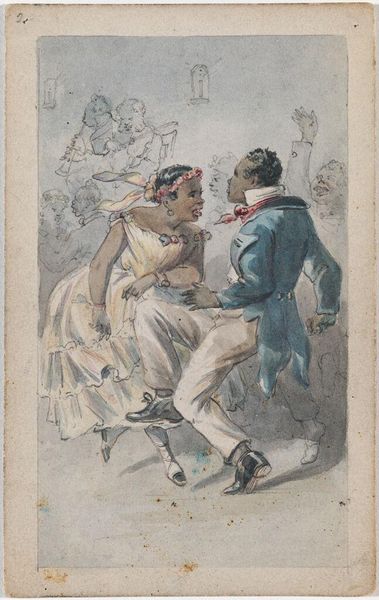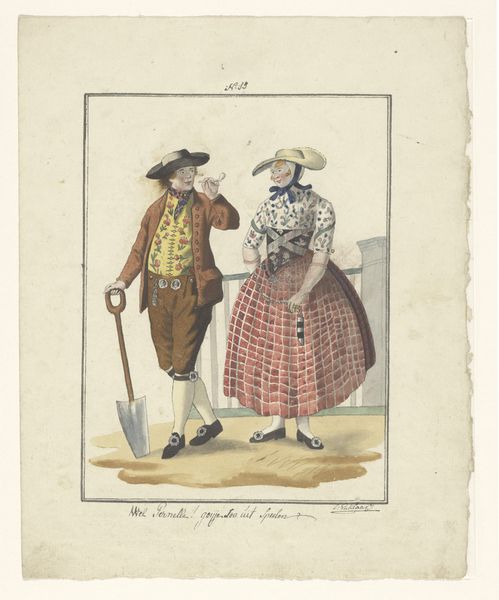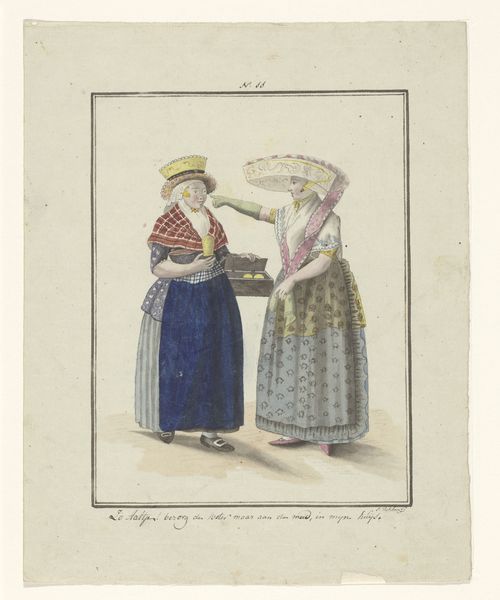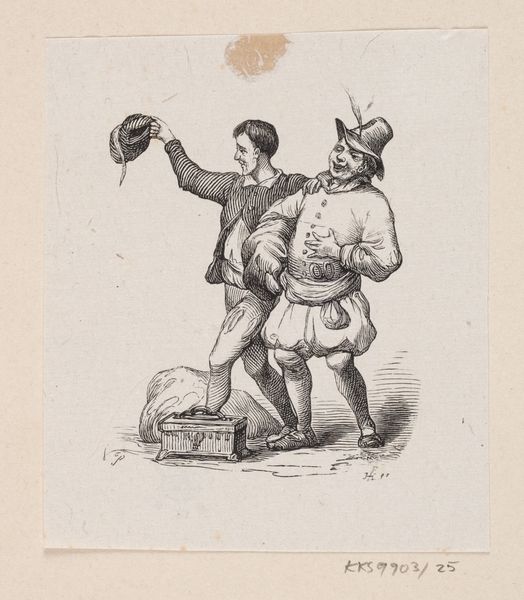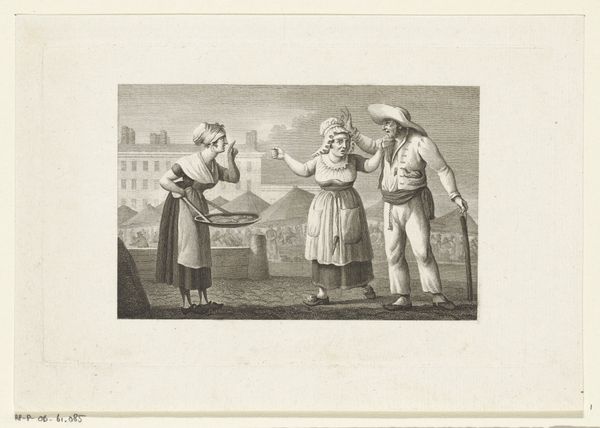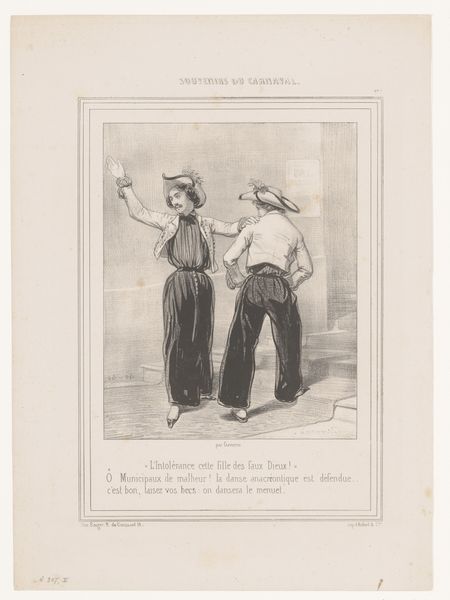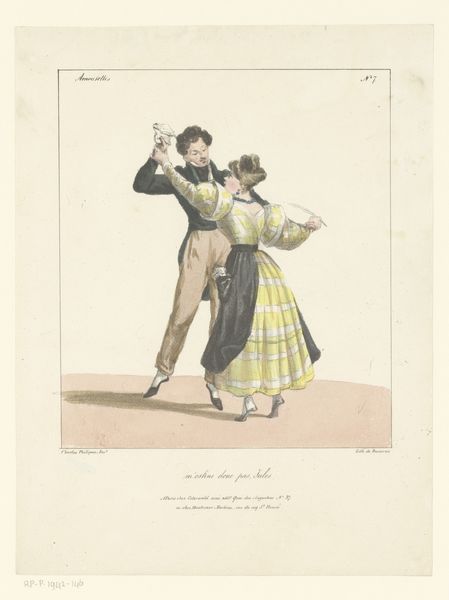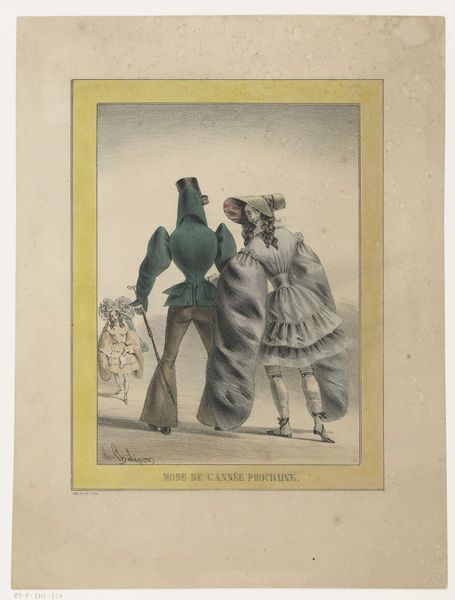
A man and a woman dancing, from a group of drawings depicting Peruvian dress 1848
drawing, paper
drawing
caricature
paper
coloured pencil
portrait drawing
watercolour illustration
genre-painting
watercolor
Dimensions: Sheet: 8 7/8 × 8 1/16 in. (22.5 × 20.5 cm)
Copyright: Public Domain
Editor: This watercolor and colored pencil work, titled "A man and a woman dancing, from a group of drawings depicting Peruvian dress," was created by Francisco Fierro in 1848. It seems like a charming, almost caricatured depiction of a dance. What catches your eye? Curator: The dynamic tension achieved through the use of line and form is noteworthy. Observe how the artist uses line to define the contours of the figures, creating a sense of movement and energy. The curvilinear lines in the woman's dress and shawl contrast with the more angular lines in the man's posture, producing a visual rhythm. Do you perceive how the restricted color palette also influences our interpretation? Editor: Yes, the limited palette emphasizes the shapes and gestures. The red shawl really pops, drawing the eye. But the faces lack detail. Are they meant to be types rather than individuals? Curator: Precisely. The emphasis is less on portraiture and more on the articulation of form within a defined space. The blank faces function almost as voids, inviting the viewer to project their own understanding onto the scene. Consider how the negative space around the figures contributes to a sense of balance, preventing the composition from feeling overcrowded despite the active poses. Do you see how the white handkerchief creates asymmetry? Editor: I hadn't thought about the negative space. I do see it now. So, even though it seems simple, it's carefully structured. I initially missed the complexity of its construction. Curator: Indeed. Fierro employs sophisticated formal techniques to achieve a seemingly simple and direct representation. We can better appreciate its semiotic language as we focus on these forms. Editor: It's fascinating to consider the strategic use of form over the explicit depiction of people. Thanks for illuminating that.
Comments
No comments
Be the first to comment and join the conversation on the ultimate creative platform.
